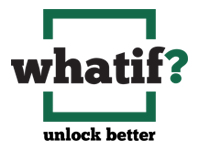
“The Story. The Shift. The Strategy.”
AI may change the landscape, but you still choose how you lead across it."
Some leadership shifts arrive like a crisis. Others begin more quietly, like a question you can’t unhear. The best ones change how you see yourself and what comes next.
Over the past few weeks, I’ve asked three such questions, sparked by conversations with CXOs, founders, high-potential talent, and seasoned leaders navigating what AI means not just for their work, but for who they are as leaders and individuals.
This week’s Thought Letter isn’t about a new question. It’s about what we’ve uncovered so far because if the AI era is rewriting the rules, we still get to write the story.
The Story: What do you want to be remembered for?
This is where this arc began. To start with, purpose, clarity, and intent.
In “What Do You Want Your Story to Be?”, I asked what might change if we stopped defining ourselves by our title or function and started designing for legacy. Asking questions like, “What would we want people to thank us for at the end of our time in our role, career, and life?”
Many leaders are operating at a high speed, but not always with clarity. The risk? You may achieve more, but matter less.
When your story isn’t clear, it gets written by other people. Or even worse, it’s forgotten.
This wasn’t a call for a polished narrative. It was a prompt to start writing now, with intention, imagination, and with awareness that AI is changing how we create impact more than how we do tasks.
The Shift: What if your value had a shelf life?
This is where urgency comes into play.
In “What If You Were Obsolete in Three Years?”, we explored what leaders must renew, replace, or reinvent to stay relevant. Because relevance isn’t maintained by defending what you know, it’s expanded by evolving who you are.
This question hit home for many. Not because they feared losing their jobs, but because they realized how easily momentum can be lost.
What we value is shifting from credentials to curiosity, from hierarchy to adaptability. Reinvention isn’t about survival. It’s the art of staying essential. It’s being meaningful in a world that won’t slow down.
The Strategy: What if learning were the job?
The final question compelled us to zoom out and broaden our perspective.
In “What If Learning Was the Job?”, we challenged a long-standing myth: that learning is a side activity, something leaders squeeze in between “real work.”
But in reality, the highest-performing teams aren’t just more informed. They’re more curious, more willing to experiment, and more open to challenge. They learn out loud.
Learning isn’t an accessory to strategy. It is the strategy. Especially in a world where answers are outsourced to AI and our edge comes from the questions we’re bold enough to ask.
Your Next Move
If you’ve followed this series, here’s the thread that runs through all three:
In the age of AI, leaders do more than deliver outcomes. They design stories, renew relevance, and embed learning into the culture.
It’s not about being technical, it’s about being transformational.
So if you’re ready to build your next chapter, here are three questions to take to your team:
- What story are we writing together?
- What parts of our identity must evolve to stay essential?
- How are we using pressure to build capability, not just resilience?
Closing Thought
AI may change the landscape, but you still choose how you lead across it.
Let’s stop waiting for clarity and start designing for meaning.
Let’s stop treating reinvention like a reaction and start making it a mindset.
In the age of AI, it’s not just what we build that matters. It’s who we choose to become while we make it.
Let’s unlock better – together.


Leave a Reply